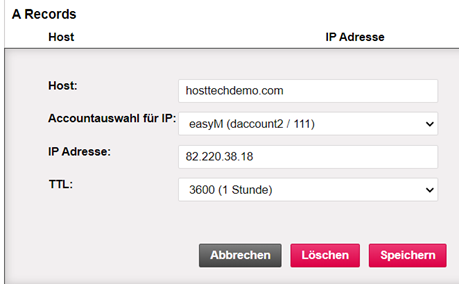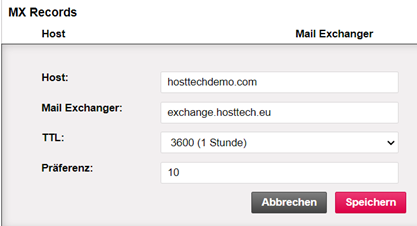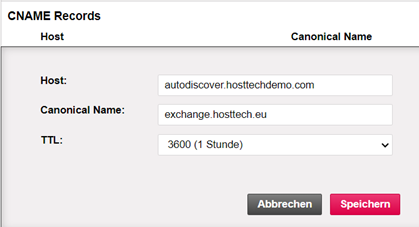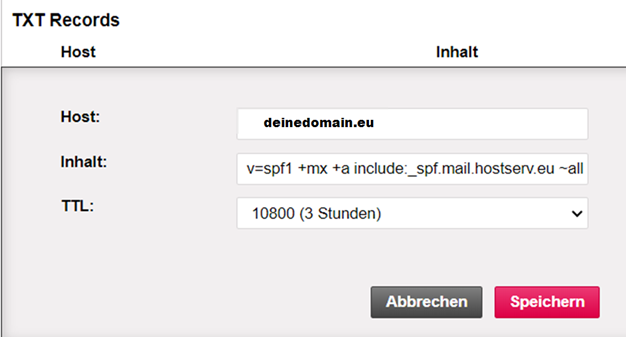DNS records can take on various functions. Accordingly, this question cannot be answered conclusively. However, we can explain the function of each type of DNS record to you. This article describes where you can change the DNS records.
You can find out more about DNS Records here.
SOA-Record
An SOA record (Start of Authority) is an important DNS record that contains basic information about the administration of a DNS zone. The SOA record is crucial for name resolution and serves as the starting point for managing a DNS zone.
This is already set by default and should never be adjusted. Under “Serial number” you can see the date of the last change and the version.
Ex.
: 2022033107
Date : 31.03.2022 Version 07 (adjusted 7x on this day)
A-Records
These records assign an IP address to a name. This tells your browser, for example, that the myhosttech customer center, which is called up via https://myhosttech.eu, should be called up on the server with the IP address 82.220.34.233, and sends the request to this server accordingly.

MX-Records (Mail Exchange Records)
These records define to which server the mails of your domain should be forwarded. Either an IP address can be specified as the destination, or a name, for example mail.yourdomain.eu. You would then need a separate A record for the name mail.yourdomain.eu so that an IP address can be resolved for this name.

CNAME-Records
A CNAME record (Canonical Name Record) is used to create an alias for a domain that points to another domain. This makes it possible to point several domains to the same IP address or to offer an easy-to-remember alternative for a domain without the need for a separate IP address. For hosted-exchange, you need 2 CNAME entries as described in this FAQ .

TXT-Records
A TXT record (text record) is used to store additional text information about a domain that can be used by other services or applications. This can be used for various purposes such as the authentication of emails (SPF, DKIM), the provision of information for services such as domain validation, or general information such as company information or legal notices.

DMARC
The DMARC DNS entry was automatically added by us. A DMARC entry normally looks like this:
Host: _dmarc.deinedomain.eu
Content: v=DMARC1; p=reject; pct=100
SPF-Record
You can read what an SPF record is here in the FAQ.
You can find out what an SPF record should look like here.
DKIM
You can find out how to set up a DKIM in this FAQ article.
TTL
TTL stands for “Time to Live” and is a period of time for which resource records are stored in the cache of DNS clients (such as DNS resolvers) before they need to be updated. This is a specification in seconds that determines how long the DNS information should remain valid before it has to be queried again from the DNS server.
A shorter TTL means that DNS information is updated faster and changes take effect on clients more quickly. A longer TTL can reduce the network load, as DNS information has to be retrieved less frequently, but can mean that changes to DNS entries take longer to take effect on clients.